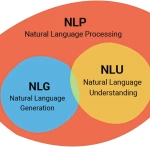In an era where cybersecurity threats are becoming increasingly sophisticated and data breaches can cost organizations millions of dollars, voice biometric authentication has emerged as one of the most effective and user-friendly security solutions available. Nuance Gatekeeper stands at the forefront of this revolution, offering enterprise-grade voice biometric technology that transforms how organizations authenticate customers and secure sensitive interactions.
Voice biometrics represents a paradigm shift from traditional authentication methods, leveraging the unique characteristics of human speech to create an unbreakable security layer. Unlike passwords that can be forgotten, stolen, or shared, voice biometrics provide passive authentication that works seamlessly in the background, creating a frictionless yet highly secure customer experience.
Nuance Gatekeeper combines decades of speech recognition expertise with advanced machine learning algorithms to deliver voice authentication that is not only secure but also highly accurate and resistant to spoofing attempts. This comprehensive solution addresses the growing need for robust security measures that don’t compromise user experience.
Understanding Voice Biometrics Technology
Voice biometrics technology analyzes unique vocal characteristics that are virtually impossible to replicate artificially. Unlike simple speech recognition that focuses on understanding words, voice biometrics examines the physiological and behavioral aspects of how individuals produce speech.
The Science Behind Voice Authentication
Human speech contains hundreds of unique characteristics that create a distinctive voiceprint for each individual. These characteristics include:
- Physiological factors: Vocal tract shape, tongue placement, and respiratory patterns
- Behavioral patterns: Speaking rhythm, stress patterns, and pronunciation habits
- Spectral analysis: Frequency distribution and harmonic structure of voice
- Dynamic features: Speech rate variations and pause patterns
- Phonetic characteristics: Individual pronunciation of specific sounds and syllables
Nuance Gatekeeper analyzes these multiple dimensions simultaneously to create a comprehensive voice model that serves as a unique identifier for each user. This multi-layered approach ensures exceptional accuracy while maintaining resistance to various spoofing attempts.
Advanced Machine Learning Implementation
The platform employs sophisticated machine learning algorithms that continuously adapt to changes in users’ voices over time. Natural variations in speech due to illness, aging, or emotional state are automatically accommodated without compromising security.
Key machine learning features include:
- Deep neural networks for pattern recognition and analysis
- Adaptive algorithms that adjust to voice changes over time
- Real-time fraud detection and anti-spoofing measures
- Continuous learning from interaction data to improve accuracy
- Automated threshold adjustment for optimal security-convenience balance
Nuance Gatekeeper Architecture and Capabilities
Nuance Gatekeeper provides a comprehensive voice biometric platform designed for enterprise deployment across various industries and use cases. The solution offers both on-premises and cloud-based deployment options to meet diverse organizational requirements.
Core Platform Features
The platform includes several integrated components that work together to deliver seamless voice authentication:
- Enrollment Engine: Captures and processes voice samples to create user voiceprints
- Authentication Engine: Performs real-time voice verification during customer interactions
- Fraud Detection: Identifies and prevents various types of spoofing and fraud attempts
- Analytics Dashboard: Provides detailed insights into authentication patterns and security events
- API Integration: Enables seamless integration with existing customer service platforms
These components integrate with existing infrastructure through nuance cloud connectivity, ensuring scalable deployment across organizations of any size.
Multi-Modal Authentication Support
While voice biometrics provides excellent security on its own, Gatekeeper supports multi-modal authentication for enhanced security in high-risk scenarios. This approach combines voice biometrics with other authentication factors:
- Knowledge-based authentication for additional verification layers
- Device fingerprinting for enhanced fraud detection
- Geographic location analysis for suspicious activity detection
- Behavioral analytics for comprehensive security assessment
- Integration with existing identity management systems
Industry Applications and Use Cases
Voice biometric authentication addresses security challenges across multiple industries, each with unique requirements and regulatory considerations.
Financial Services Security
Financial institutions face constant threats from fraudsters attempting to gain unauthorized access to customer accounts. Voice biometrics provides a robust defense against these threats while improving customer experience.
Banking applications include:
- Account access verification: Secure login for telephone and mobile banking
- High-value transaction authorization: Additional security for large transfers and payments
- Credit card fraud prevention: Real-time authentication during suspicious activities
- Customer service authentication: Instant verification for call center interactions
- Regulatory compliance: Meeting KYC (Know Your Customer) requirements efficiently
According to Javelin Strategy & Research, voice biometrics can reduce authentication time by up to 90% while significantly improving security compared to traditional methods.
Healthcare Patient Authentication
Healthcare organizations must balance security requirements with patient privacy and convenience. Voice biometrics enables secure patient authentication without compromising HIPAA compliance.
Healthcare use cases include:
- Patient identity verification for telehealth consultations
- Secure access to electronic health records and test results
- Prescription refill authorization and pharmacy verification
- Insurance claim processing and benefit verification
- Integration with nuance paperport systems for document access control
The technology ensures that sensitive medical information remains protected while providing convenient access for authorized patients and healthcare providers.
Customer Service and Contact Centers
Contact centers handle millions of customer interactions daily, making efficient and secure authentication crucial for operational success. Voice biometrics transforms the customer service experience by eliminating lengthy verification processes.
Contact center benefits include:
- Passive authentication during natural conversation flow
- Reduced average handling time for customer interactions
- Improved customer satisfaction through streamlined processes
- Enhanced agent productivity by eliminating manual verification steps
- Comprehensive fraud detection and prevention capabilities
Government and Public Services
Government agencies require the highest levels of security while serving diverse populations with varying technical capabilities. Voice biometrics provides accessible security that works for all citizens.
Government applications include:
- Citizen identity verification for benefit programs and services
- Secure access to government portals and online services
- Immigration and border control applications
- Law enforcement and public safety communications
- Veterans affairs and military personnel authentication
Security Features and Anti-Spoofing Technology
Modern voice biometric systems must defend against increasingly sophisticated attack methods. Nuance Gatekeeper incorporates advanced anti-spoofing technology to prevent various fraud attempts.
Comprehensive Spoofing Detection
The platform detects and prevents multiple types of voice spoofing attacks:
- Recording playback attacks: Detection of pre-recorded voice samples
- Text-to-speech synthesis: Identification of artificially generated speech
- Voice conversion attacks: Recognition of voice morphing attempts
- Live human impersonation: Detection of skilled voice mimicry
- Presentation attacks: Prevention of various replay and injection attacks
These detection capabilities operate in real-time without affecting the user experience, providing transparent security that works behind the scenes.
Liveness Detection Technology
Advanced liveness detection ensures that authentication requests come from live human speakers rather than recorded or synthesized audio. This technology analyzes various acoustic and linguistic patterns that are difficult to replicate artificially.
Liveness detection features include:
- Real-time analysis of speech naturalness and spontaneity
- Detection of acoustic artifacts from recording and playback systems
- Analysis of micro-expressions and speech variations
- Environmental audio analysis for context verification
- Challenge-response mechanisms for high-security applications
Integration and Implementation Strategies
Successful deployment of voice biometric authentication requires careful planning and integration with existing systems and processes.
API Integration and Development Support
Nuance Gatekeeper provides comprehensive APIs that enable seamless integration with various platforms and applications:
- RESTful APIs for web and mobile application integration
- WebRTC support for browser-based voice authentication
- SIP integration for telephony and VoIP systems
- SDK availability for major programming languages and platforms
- Webhook support for real-time event notifications
The platform’s flexible architecture accommodates various deployment scenarios, from simple authentication additions to comprehensive security overhauls.
Deployment Options and Scalability
Organizations can choose from multiple deployment options based on their specific requirements:
- Cloud-based deployment: Scalable, managed service with global availability
- On-premises installation: Complete control over data and infrastructure
- Hybrid solutions: Combination of cloud and on-premises components
- Multi-tenant configurations: Shared resources for multiple organizations
- Edge computing: Local processing for reduced latency and enhanced privacy
The platform automatically scales to handle varying authentication volumes, ensuring consistent performance during peak usage periods.
Performance Metrics and Accuracy Standards
Voice biometric systems must achieve exceptional accuracy to be viable for enterprise deployment. Nuance Gatekeeper consistently delivers industry-leading performance across various metrics.
Authentication Accuracy Measurements
The platform achieves remarkable accuracy rates across different scenarios:
- False Acceptance Rate (FAR): Less than 0.01% for unauthorized access attempts
- False Rejection Rate (FRR): Below 1% for legitimate user authentications
- Equal Error Rate (EER): Industry-leading performance benchmarks
- Authentication speed: Sub-second verification for most interactions
- Language support: High accuracy across multiple languages and dialects
These performance metrics ensure that organizations can rely on voice biometrics for mission-critical security applications.
Continuous Performance Monitoring
The platform includes comprehensive monitoring and analytics capabilities that track performance and identify optimization opportunities:
- Real-time authentication success and failure rates
- User experience metrics and satisfaction scores
- System performance and response time monitoring
- Fraud attempt detection and analysis
- Usage patterns and trend identification
Privacy and Compliance Considerations
Voice biometric systems must address privacy concerns and comply with various regulatory frameworks worldwide.
Data Protection and Privacy Standards
Nuance Gatekeeper implements comprehensive privacy protection measures:
- Voiceprint template storage with encryption and access controls
- Minimal data collection principles for privacy protection
- User consent management and opt-out capabilities
- Data retention policies and automated deletion procedures
- Cross-border data transfer compliance with international regulations
The platform supports GDPR, CCPA, and other privacy regulations while maintaining security effectiveness.
Regulatory Compliance Framework
Different industries face specific regulatory requirements that voice biometric systems must address:
- Financial services: PCI DSS, SOX, and banking regulations compliance
- Healthcare: HIPAA, HITECH, and medical privacy requirements
- Government: FISMA, FedRAMP, and security clearance standards
- International: ISO 27001, SOC 2, and global security certifications
- Biometric laws: Compliance with state and local biometric privacy legislation
Regular compliance audits and certifications ensure that organizations can confidently deploy voice biometric authentication in regulated environments.
Return on Investment and Business Benefits
Organizations implementing voice biometric authentication typically see significant returns on investment through various operational improvements and cost savings.
Quantifiable Business Benefits
Voice biometrics delivers measurable improvements across multiple business metrics:
- Reduced authentication time: Average savings of 30-45 seconds per interaction
- Decreased fraud losses: Up to 90% reduction in account takeover attempts
- Improved customer satisfaction: Elimination of frustrating password recovery processes
- Lower operational costs: Reduced call handling time and support overhead
- Enhanced security posture: Significant improvement in overall authentication security
According to Opus Research, organizations typically see ROI within 6-12 months of voice biometric deployment.
Operational Efficiency Improvements
Beyond direct cost savings, voice biometrics enables operational improvements that provide long-term value:
- Streamlined customer onboarding and verification processes
- Reduced training requirements for customer service representatives
- Elimination of password reset requests and associated support costs
- Improved compliance and audit capabilities
- Enhanced brand reputation through superior security and user experience
Future Developments and Technology Roadmap
The voice biometrics landscape continues evolving with new technologies and capabilities that will further enhance security and user experience.
Emerging Technology Integration
Future developments will expand voice biometric capabilities through integration with emerging technologies:
- Artificial Intelligence enhancement: Advanced AI for improved accuracy and fraud detection
- Edge computing deployment: Local processing for enhanced privacy and reduced latency
- 5G network optimization: Ultra-low latency authentication for real-time applications
- IoT device integration: Voice authentication for smart home and connected devices
- Blockchain verification: Distributed ledger technology for enhanced security and auditability
Market Evolution and Opportunities
The voice biometrics market continues expanding across new industries and applications:
- Increased adoption in retail and e-commerce environments
- Growing demand for automotive and transportation security
- Expansion into smart city and public infrastructure applications
- Enhanced accessibility features for users with disabilities
- Integration with virtual and augmented reality platforms
According to MarketsandMarkets, the global voice biometrics market is expected to reach $11.9 billion by 2026, driven by increasing security concerns and demand for frictionless authentication.
Implementation Best Practices and Success Strategies
Organizations achieve optimal results from voice biometric implementations by following proven best practices and avoiding common pitfalls.
Project Planning and Stakeholder Engagement
Successful implementations require comprehensive planning and cross-functional collaboration:
- Executive sponsorship and clear business case development
- Technical team engagement for integration planning and testing
- Customer experience design with user journey mapping
- Security team involvement for risk assessment and mitigation
- Compliance team consultation for regulatory requirements
Early stakeholder alignment ensures smooth deployment and user adoption.
User Experience Optimization
Voice biometric systems must provide exceptional user experiences to drive adoption and satisfaction:
- Intuitive enrollment processes with clear instructions and guidance
- Transparent authentication feedback without revealing security details
- Graceful fallback options for authentication failures
- Multi-language support for diverse user populations
- Accessibility features for users with speech or hearing impairments
Change Management and Training
Organizational change management ensures successful adoption across all user groups:
- Comprehensive training programs for customer service representatives
- User education campaigns highlighting security and convenience benefits
- Gradual rollout strategies to minimize disruption and resistance
- Continuous feedback collection and system optimization
- Regular performance review and improvement initiatives
Conclusion
Nuance Gatekeeper represents a transformative approach to customer authentication that addresses the fundamental limitations of traditional security methods. By leveraging the unique characteristics of human speech, organizations can provide both exceptional security and outstanding user experiences that drive customer satisfaction and operational efficiency.
The platform’s comprehensive features, from advanced anti-spoofing technology to seamless API integration, enable deployment across diverse industries and use cases. Whether protecting financial transactions, securing healthcare communications, or streamlining customer service interactions, voice biometrics provides a robust foundation for modern authentication requirements.
As cyber threats continue evolving and customer expectations for seamless experiences grow, voice biometric authentication will play an increasingly critical role in organizational security strategies. The combination of nuance communications expertise with cutting-edge machine learning technology creates a platform that not only meets today’s security challenges but also provides a foundation for future innovation.
Organizations that embrace voice biometric authentication through solutions like Nuance Gatekeeper position themselves for sustained competitive advantage through superior security, reduced operational costs, and enhanced customer experiences. The technology’s proven track record, combined with ongoing innovation and development, makes it an essential component of modern enterprise security architecture.


